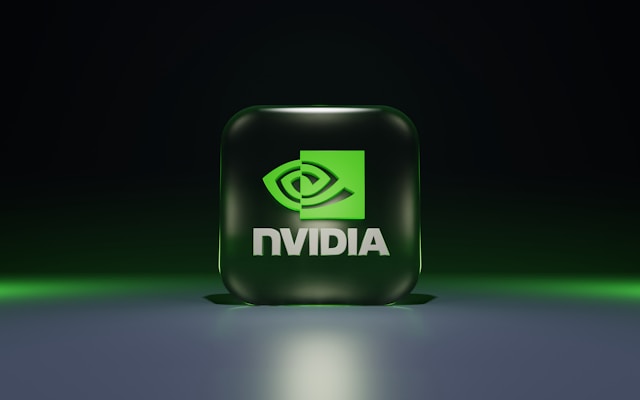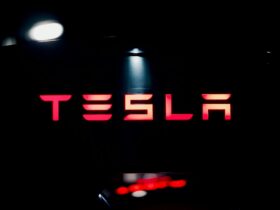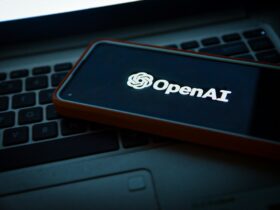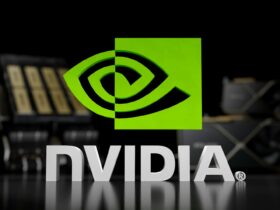AI Growth or Bubble Brewing?
Just three years after Nvidia and OpenAI ignited the artificial intelligence revolution, the two powerhouses are back in the spotlight with a deal that could shape the future of the industry—or stoke fears of unsustainable growth. Nvidia’s announcement that it will invest up to $100 billion in OpenAI marks one of the largest single commitments in AI infrastructure.
Supporters see the deal as a bold step toward building the computing backbone required to support generative AI at scale. Critics, however, warn that this type of investment blurs the line between innovation and circular financing, where money flows in a loop designed to keep demand—and valuations—artificially inflated.
The debate raises an important question: Is this a long-term growth catalyst or another bubble in the making, reminiscent of the dot-com era?
Inside Nvidia’s $100 Billion Commitment
Nvidia’s investment is aimed at helping OpenAI build massive data centers packed with Nvidia’s advanced chips. These facilities will be crucial for training and running increasingly complex AI models such as ChatGPT, DeepSeek, and future generative platforms.
According to executives, OpenAI will lease processors rather than buy them outright, suggesting the partnership is structured to reduce upfront costs. Still, analysts are questioning how quickly such expensive hardware could depreciate—and whether returns justify the scale of investment.
Why Analysts See ‘Circular Financing’ Risks
Bernstein Research analyst Stacy Rasgon described the deal as a potential red flag, warning that Nvidia’s involvement may fuel concerns of circular capital flows:
- Nvidia invests in AI startups (including OpenAI).
- Those startups use the funding to buy—or lease—Nvidia’s chips.
- Nvidia’s revenues then grow from demand it indirectly helped create.
Rasgon noted that Nvidia participated in more than 50 AI venture deals in 2024, and this year’s pace is set to exceed that. But the OpenAI deal “dwarfs all the others,” he said, making it the clearest example yet of this feedback loop.
Comparisons to Past Tech Bubbles
The AI boom has drawn inevitable comparisons to the dot-com bubble of the late 1990s. Like then, massive investments are being justified on expectations of future growth that may or may not materialize.
- Dot-com parallels: Sky-high valuations, circular funding, and infrastructure expansion far ahead of actual demand.
- Key difference: Today’s AI chips and applications are already driving tangible business outcomes—from cloud computing revenue to productivity tools.
Still, OpenAI’s CEO Sam Altman has acknowledged that current startup valuations may be overheated, even as he insists that trillions of dollars in infrastructure will eventually be required.
Industry Context: Why Nvidia Is Different From Microsoft and Amazon
Other tech giants such as Microsoft and Amazon have also poured billions into AI startups, largely to drive workloads onto their cloud platforms. Nvidia’s role, however, is unique:
- It controls the market for AI accelerators.
- Its chips are the backbone of training and inference for nearly every leading AI model.
- Its influence spans both hardware and venture funding.
This dominance makes Nvidia both the biggest beneficiary of AI demand and, paradoxically, the company most exposed to accusations of fueling a bubble.
How Nvidia’s AI Bet Compares With Microsoft, Amazon, and Google.
| Company | Key AI Investment | Scale / Value | Primary Goal | Risks / Concerns |
|---|---|---|---|---|
| Nvidia | Investment in OpenAI | Up to $100 billion | Fund AI infrastructure buildouts; strengthen GPU demand via leasing model | Accusations of circular financing; bubble risk; chip depreciation uncertainty |
| Microsoft | Multi-year investment in OpenAI | ~$13 billion | Drive workloads onto Azure Cloud; integrate AI into Office, Bing, GitHub | Regulatory scrutiny; reliance on OpenAI’s success; high compute costs |
| Amazon | Stake in Anthropic | ~$4 billion | Boost demand for AWS cloud and Bedrock AI services | Fierce competition with Microsoft/Google; profitability lagging vs. cloud growth |
| Google (Alphabet) | Heavy R&D in DeepMind & Gemini | Billions annually (exact figures undisclosed) | Advance proprietary AI models; strengthen Google Cloud and consumer AI apps | Execution risk; competition from OpenAI/Anthropic; regulatory challenges |
| Source: Company disclosures, analyst estimates (2025). Figures rounded for readability. Investment values may evolve with new funding rounds. | ||||
Expert Opinions: Optimism and Skepticism Collide
Bubble-Like Behavior?
Jay Goldberg of Seaport Global Securities, one of the few analysts with a sell rating on Nvidia, compared the OpenAI deal to having “your parents co-sign on your first mortgage.” The analogy suggests that OpenAI, still unprofitable, may not be able to secure financing without Nvidia’s backing.
Goldberg also cautioned:
- In good times, the partnership accelerates growth.
- In downturns, it amplifies the downside, raising systemic risk.
Strategic Necessity?
On the other hand, Nvidia defenders argue that the deal is less about circular financing and more about strategic positioning. AI infrastructure is expensive, but early movers stand to lock in enormous competitive advantages as adoption accelerates.
How Investors Are Reacting
Nvidia’s stock continues to command premium valuations, but concerns about sustainability and transparency are weighing on some institutional investors. The company’s aggressive venture activity—combined with its outsize role in AI supply chains—creates both opportunity and vulnerability.
Key points investors are watching:
- Revenue recognition: Will Nvidia’s OpenAI investment indirectly inflate its own sales?
- Depreciation rates: How quickly will leased AI processors lose value?
- Broader adoption: Will demand from cloud providers and enterprises outpace concerns of circular flows?
The Broader AI Landscape: A Race for Infrastructure
AI is no longer just about algorithms; it’s about massive infrastructure investments. Analysts project that trillions will need to be spent globally on data centers, power, and chips to support AI expansion.
Key Trends:
- Data center buildouts are accelerating worldwide.
- Chip supply constraints remain a bottleneck.
- Power consumption is becoming a growing concern for governments and regulators.
Within this landscape, Nvidia’s partnership with OpenAI could be a turning point—showcasing both the promise and risks of scaling AI at unprecedented speed.
Final Thoughts: Growth Engine or Bubble Fuel?
Nvidia’s $100 billion OpenAI deal embodies the tension at the heart of today’s AI economy. On one hand, it represents a bold bet on the infrastructure required to power generative AI, cementing Nvidia’s role as the backbone of the industry. On the other, it raises fears of circular financing and bubble-like behavior, with investors questioning whether capital is being recycled to artificially sustain growth.
For investors, the takeaway is clear:
- AI’s long-term potential is enormous, but not without volatility.
- Due diligence is critical—understanding where genuine demand ends and circular funding begins will determine winners and losers.
- Like past tech booms, this cycle will likely reward disciplined investors who balance growth exposure with an eye on sustainability and risk.
In short, Nvidia’s OpenAI partnership could be a defining moment for AI—either as a launchpad for the next trillion-dollar wave or as the first sign of a bubble stretching too far.







Leave a Reply